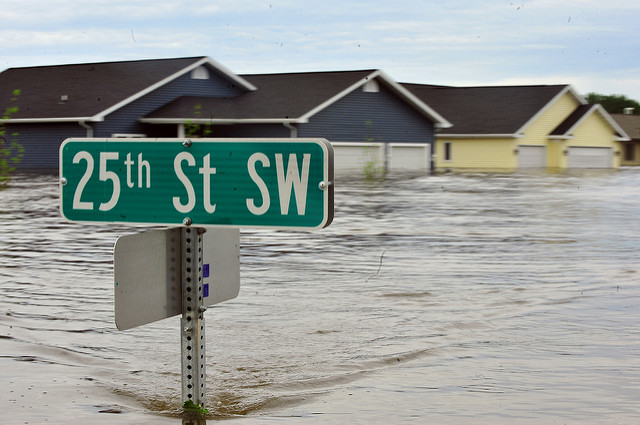by Paul R. Pillar
Anti-Trump street demonstrations since the election have had an aimless quality. It is hard to see anything they accomplish besides expressing frustration and letting off steam. The lack of focus is one indication that many of those united by abhorrence of a Donald Trump presidency are likely to start tripping over each other. The different emphases that different abhorrees give to different issues will mean competition for attention, energy, and resources. Roots of such competition can be found in the habit, displayed in much Democratic Party politics and by Hillary Clinton’s presidential campaign, of often approaching issues less in terms of a common national interest and more in terms of the diverse demands and interests of diverse demographic groups. There is likely to be strife as well between those who believe that cooperating at all with a Trump administration lends respectability to its underlying prejudices and Congressional Democrats who want to work with the new administration where there is at least some common ground.
Here is a suggestion, for those who really want to make a positive contribution to the common interest, on how to prioritize issues on which there is well-founded worry about the damage that the Trump administration may cause. Besides thinking very carefully, from a broad frame of reference, about what is intrinsically most important, think about where that damage is most likely to be irreversible, or at least where it cannot be reversed without much more difficulty and uncertainty than other types of damage can be.
Many issues, although they are important and although bad policy on them can inflict much pain, are quite reversible. This is true of many topics in fiscal and economic policy. Even if, for example, financial deregulation hastens the coming of another financial crisis and another Great Recession, this will cause a lot of economic pain to the people but the nation will recover, as it recovered from the first Great Recession. With many domestic policies, generally more so than with foreign policy, the self-corrective mechanism of disenchanted voters deciding to cast their votes in a different direction comes into play. This likely will be the case with many who supported Trump this year coming to see that his policies provide no improvement to the economic situations that underlay their discontent.
Higher in priority are matters involving the integrity and validity of the democratic process through which all other policies are made. Here the element of irreversibility, or of difficulty in reversing, involves an entrenched ruling minority using techniques to stay entrenched, well after it has lost whatever majority it once may have had. This topic includes voter suppression laws, in which a party in power impedes the exercise of the right to vote in ways that disproportionately disadvantage supporters of the other party. It also includes gerrymandering of legislative and Congressional districts, which is why a recent decision by a federal district court involving a case in Wisconsin, which has confronted this problem directly, is so important. It is reasonable to view such techniques as potentially a step toward authoritarianism. Most of the action on this topic, however, is to be found in the state legislatures and the courts, and is not necessarily a product of a president’s policies.
The highest priority, given the criterion of irreversibility of presidentially-inflicted harm, should go to the issue of climate change and the need to arrest global warming. The intrinsic importance of the subject ought to be beyond question: using a broad frame of reference, it would be hard to think of anything more vital for us humans than keeping the planet habitable for humans. The difficulty in reversing any damage from presidential policies has two elements, one of which involves international politics and the fragility of international cooperation. With the Paris climate accord and understandings reached between the United States and China, the last few years have seen a welcome momentum in the right direction. If the United States, one of the two largest greenhouse gas emitters, were to lurch away from the international consensus in the next four years, the momentum would be hard to recover.
Even more genuinely irreversible are some of the geophysical processes involved. One of the most disturbing aspects of global warming is that it involves self-reinforcing feedback loops that would make it extremely hard if not impossible to reverse the warming trend—at least on any time scale that has meaning as far as the history of the human species is concerned—once the trend passes certain tipping points. This means even a human race universally committed several years or decades from now to saving the planet would be unable to accomplish some things toward that end that humans of today could accomplish. In short, the next several years matter a lot, and if they are not used well, irreversibility becomes more of a problem.
An example of such a feedback loop involves sea ice in the Arctic. The warmer it gets in the Arctic, the less ice there is. And the less ice there is, the less sunlight is reflected off the surface, the more heat is absorbed, and the more global warming accelerates further. The extent of Arctic sea ice right now, which is at an off-the-charts low for this time of year, ought to be ringing alarm bells. Another feedback loop involves land areas in the Arctic. Thawing of long-frozen tundra and organic material within it releases methane, a potent greenhouse gas that exacerbates the global warming.
Climate change deniers ought to be treated with all the disdain they richly deserve. Going against the overwhelming scientific consensus on this subject ought to be given as much respect as belief that the Earth is flat. Those who place short-term financial or political interests ahead of the fate of the planet should be condemned for their indefensibly selfish and short-sighted posture.
Some of Donald Trump’s utterances on the subject are worthy of disdain, as are some of the anti-scientific people who are advising him on the topic. Trump’s assertion that climate change is a hoax that China has perpetrated for economic advantage is looking ridiculous considering how China has been not only talking the talk in reaching diplomatic agreements but also walking the walk in restructuring its own energy infrastructure. Beijing’s de-emphasis of coal and development of renewal energy sources have meant that China may have already turned a corner in reducing carbon dioxide emissions as of last year.
But with a president as thin-skinned as Trump, merely condemning him for the ridiculous and the outrageous in what he has said is not the way to steer him onto a wiser policy course. It is tactically sound, and not just wishful thinking, to try to build upon the more constructive-sounding parts of his inconsistent rhetoric. He ought to be taken at his word when, as in his interview with the New York Times, he says he has an “open mind” about climate change.
There is potential for getting the new president to use that open mind to adopt some good planet-saving ideas as if they were his own. The concept of the United States being a leader and not a laggard, and not losing ground to the likes of the Chinese, in the development of renewable energy represents one set of such ideas. The concept should be all the more attractive to Trump if he becomes educated enough in the subject to understand that the trend to renewables is a matter of economics and not just of environmental activism.
A real estate developer such as Trump also ought to be impressed at least as much as anyone else by the effects that a rising sea level already is having on the market for coastal real estate. His own Mar-a-Lago is by the water—in Palm Beach in southeastern Florida, where those effects are being felt at least as severely as anywhere else in the United States.
Columnist Frank Bruni probably has it right when he identifies applause and adulation of an audience as the main motivator of Trump. To steer him in the right direction on climate change, he needs to feel that he is responding to the demands and emotions of an audience. So go ahead and hold street demonstrations and make lots of noise on this subject; but the signs and the slogans should be pro-planet Earth rather than anti-Trump.
This article was first published by the National Interest and was reprinted here with permission. Copyright The National Interest. Photo of flood waters in Minot, North Dakota by DVIDSHUB via Flickr.






“Here is a suggestion, for those who really want to make a positive contribution to the common interest” … let’s all give President Trump a chance. He’s making excellent cabinet choices and already having a positive influence both domestically and internationally.